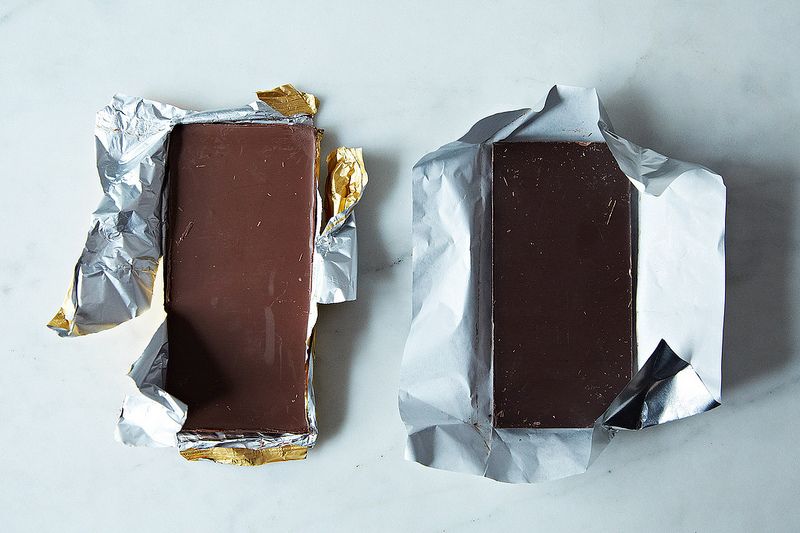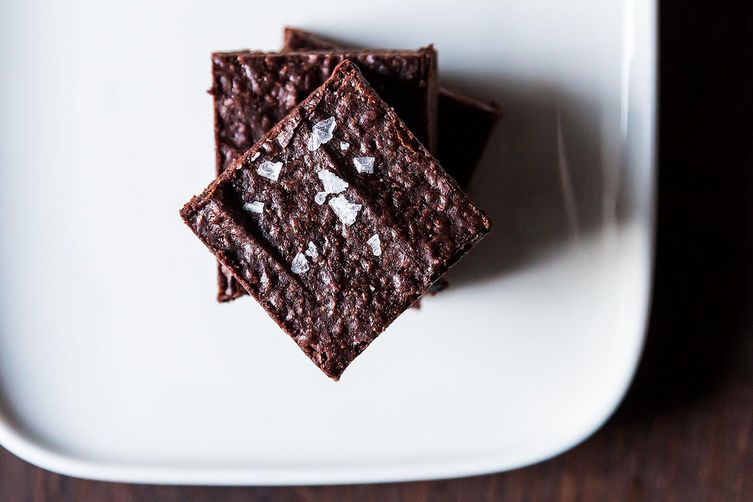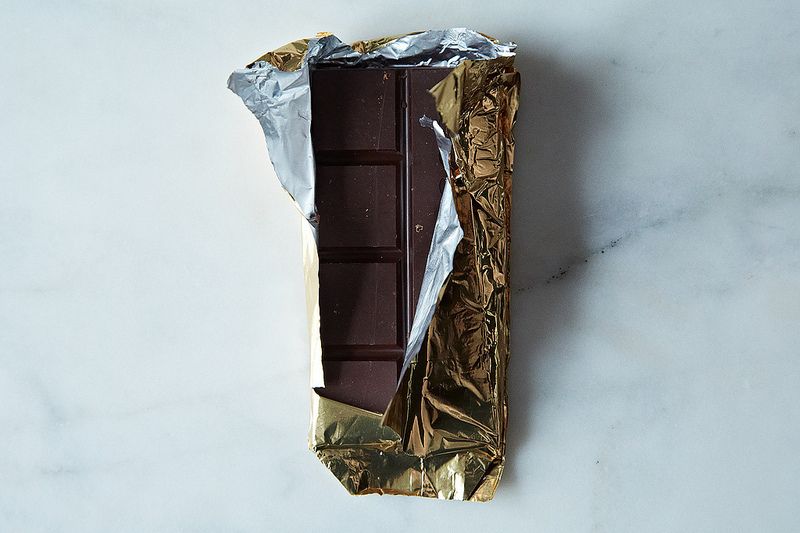For two weeks, our friends at the Good Food Awards will be sharing articles, tips, and recipes from some of their judges, friends, and past GFA winners. Each day will feature a different category, from chocolate to charcuterie to cheese. And if you'd like to score some of the goods competing in this year's awards, head to Provisions.
Today: Chocolate maven Alice Medrich reminds us how important it is to use the right cacao percentage when baking with chocolate -- and shares tips for buying the right bar.

Not too long ago, most bittersweet and semisweet chocolate in the baking aisle had between 54% and 60% cacao (though none were labeled by percentage) and they were similar enough to be interchangeable in recipes. If a recipe called for either bittersweet or semisweet chocolate, all you had to do was buy chocolate labeled “bittersweet” or “semisweet”.
Today, there are more semisweet and bittersweet choices, most are labeled by percentage, and percentages frequently exceed 60% -- often considerably!
The percentage on a chocolate label tells you how much of the bar, by weight, is made of pure cocoa beans (aka cacao) or parts thereof. If the chocolate is dark (semisweet or bittersweet), all or most of the rest of the bar is sugar: thus a bar of 70% chocolate is about 30% sugar and a bar of 60% chocolate is about 40% sugar. Got it?
More: Get Alice's genius recipe for the best cocoa brownies you've ever had.

When you bake or make desserts, you need to choose the right chocolate because cacao percentage profoundly affects texture and baking time -- not just the chocolatiness and sweetness of the dessert. A bittersweet 70% chocolate can actually ruin a recipe that was developed with a 55% percent chocolate, even if both chocolates are labeled as bittersweet! The higher cacao content and lower sugar can make mousses gritty, cakes dry, and ganache curdle! The words “semisweet” and “bittersweet” are just not specific enough anymore.
To ensure success with a recipe, it’s better to shop for chocolate by percentage rather than by name. Here are some guidelines:
If a recipe calls for dark, semisweet, or bittersweet chocolate with a percentage (or percentage range), choose your chocolate based on the percentage -- disregard the words "semisweet" and "bittersweet."

If an old favorite recipe -- one that you have had for 10 years or more -- calls for semisweet or bittersweet chocolate but does not include a percentage, it’s best to use chocolate that does not exceed 60% cacao. (You can also use up to 62% if you use a little less than the recipe calls for -- like Good Food Award finalist Askinosie Chocolate 62% Dark Milk Chocolate.)
Things get trickier if your recipe comes from a recent book or periodical, and does not include a percentage. Always check the ingredient section in the front or back of a cookbook for the author's chocolate advice. Without percentages, we can only hope that recipes that call for these chocolates are forgiving enough to accommodate the huge variation in cacao percentage among them.

Meanwhile, I hope (and I predict) that all recipes will eventually call for chocolate by percentage when it affects the success of the recipe -- just as all good recipes include type of flour, cut of meat, or whether fruit or vegetables are added raw or cooked.
For more information about cacao percentages, how to use high percentage chocolates in recipes, or how to modify recipes for different chocolates, see my latest book, Seriously Bittersweet.
Photos by James Ransom
See what other Food52 readers are saying.